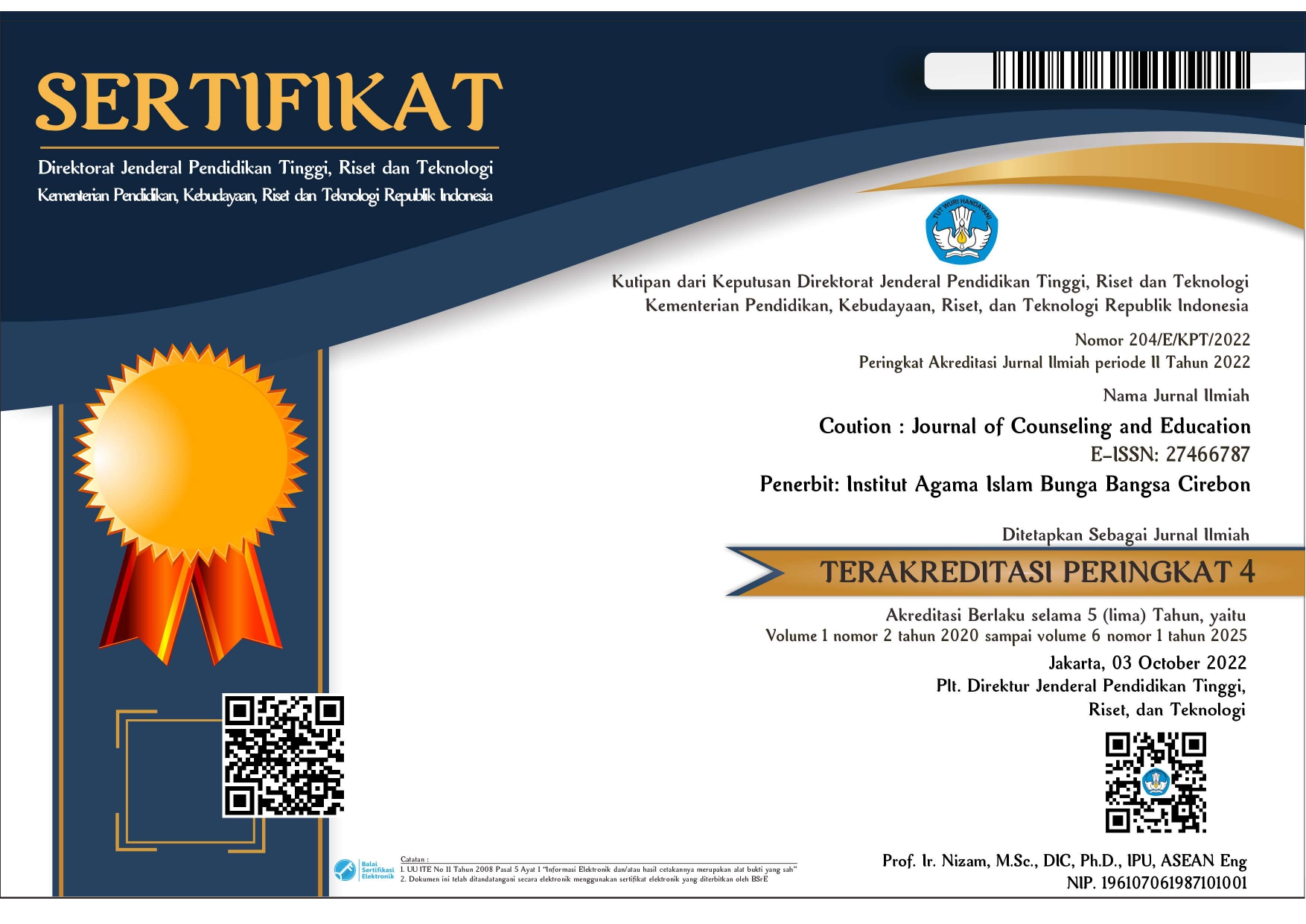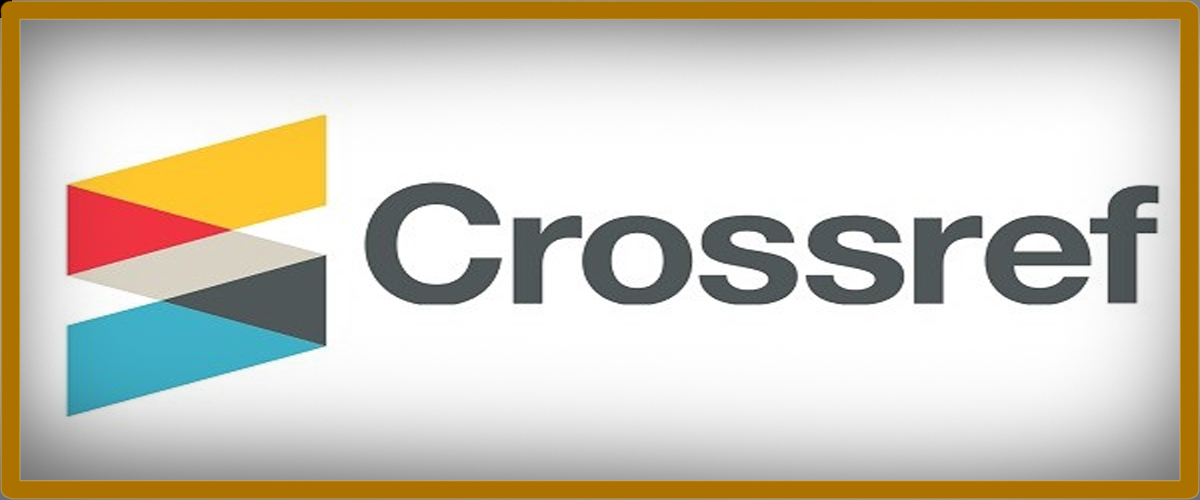Hubungan Komunikasi Seksual dalam Keluarga dengan Kecenderungan Perilaku Homoseksual Pada Santri
Abstract
Nowadays the tendency of homosexual behaviour is more and more widespread, one of them is in Islamic boarding school. The tendency of homosexual behaviour in students has different characters in general, because they have a fluid nature, which sometimes appears and disappears in other times. Sexual communication in the family becomes important to be delivered to children, as family is the first environment that provides information about life. This study aims to examine the relationship between sexual communication in families and the tendency of homosexual behaviour in students. The research used quantitative method. The population of this study is Madrasah Aliyah Boarding School students, with the islamic boarding schools elected by random method from 12 schools and 3 schools was chosen to be the research sites, with total sample of 170 students. The research instrument uses the tendency of homosexual behavior scale, sexual communication in the family scale, which has been tested for its validation and reliability. Data analysis used multiple regression analysis with the help of SPSS 20.0 program. Based on this study there is a significant negative correlation between sexual communication in the family and the tendency of homosexual behavior in students, with a r_xy value of 0.005. From this study it can be concluded that the better sexual communication in the family is delivered the less the tendency for homosexual behavior occurs.
Keywords: Sexual Communication in the Family; Trends in Homosexual Behavior; Students.
Abstrak
Dewasa ini kecenderungan perilaku homoseksual semakin marak, salah satunya di pondok pesantren. Kecenderungan perilaku homoseksual pada santri memiliki karakter yang berbeda pada umumnya, karena mereka memiliki sifat yang cair (fluid) yaitu kadang muncul, kadang hilang. Komunikasi seksual dalam keluarga menjadi penting yang harus diberikan pada anak, karena lingkungan pertama yang memberikan informasi tentang kehidupan. Penelitian ini bertujuan untuk menguji hubungan komunikasi seksual dalam keluarga dengan kecenderungan perilaku homoseksual pada santri. Metode penelitian yang digunakan adalah kuantitatif. Populasi penelitian ini adalah santri yang berada pada jenjang pendidikan Madrasah Aliyah pondok pesantren, pemilihn pondok pesantren dengan cara random dari 12 pondok pesantren lalu didapatkan 3 pondok pesantren untuk dijadikan tempat penelitian, dengan jumlah sampel sebanyak 170 santri. Instrumen penelitian menggunakan skala kecenderungan perilaku homoseksual, komunikasi seksual dalam keluarga, yang sudah dilakukan validasi dan reliabilitas. Teknik analisa data menggunakan analisis regresi ganda dengan bantuan program SPSS 20.0. Berdasarkan pada penelitian ini terdapat hubungan nilai negatif yang signifikan antara komunikasi seksual dalam keluarga dengan kecenderungan perilaku homoseksual pada santri, dengan nilai sebesar 0,005. Sehingga dalam penelitian ini dapat disimpulkan bahwa komunikasi seksual dalam keluarga semakin baik diberikan maka akan mengurangi kecenderungan perilaku homoseksual.
Kata kunci: Komunikasi Seksual dalam Keluarga; Kecenderungan Perilaku Homoseksual; Santri.
Downloads
References
Al-Bukhari, S. H. (t.thn.). al-adabul mufrad no 598.
Amarillah, A. P. (2006, Mei). Hubungan Antara Pengetahuan Seksualitas dan Kualitas Komunikasi Orang Tua-Anak dengan Perilaku Seksual Pranikah. Indigenous Jurnal Ilmiah Berkala, Vol. 8 No 1 , 24-34.
Aspy, B. C. (2007). Parental Comunication and Youth Sexual Behavior: Implication for Physician. Journal of Adolescence 30, 449–466.
Azhari, R. (2008). Membongkar Rahasia Jaringan Cinta Terlarang Kaum Homoseksual. Jakarta: Hujjah Pres.
Azizah, N. S. (2013). Konsep Diri Homoseksual di Kalangan Mahasiswa Semarang; Studi Kasus Mahasiswa Homoseksual di Kawasan Simpanglima Semarang. ENEECE (Journal Of Non Formal Education and Community Empowerment).
Barnes, H. L. (1985). Parent-adolescent communication and the Circumplex Model. Special Issue: Family development. Dalam Child Development (hal. 438-447).
Berk, L. E. (2012)). Development Through The Lifespan Dari Prenatal Sampai Masa Remaja, Transisi Menjelang Dewasa. Yogyakarta: Pustaka Pelajar.
Berkey, H. &. ( On 04 January 2015). The Multidimensional Scale of Sexuality. Routledge.
Boellstorff, T. (2005). Between Religion and Desire: Being Muslim and Gay in Indonesia. American Anthropologist, Vol.107 Proquest.
Chaplin, J. (2002). Kamus Lengkap Psikologi (Kedelapan ed.). (K. Kartono, Penerj.) Jakarta: Raja Grafindo Persada.
Chung, B. Y. (1996). Assessment of Sexual Orientation in Lesbian/Gay/Bisexual Studies. Journal of Homosexsuality, Vol. 30 (4).
Coffelt, A. T. (2010). Is Sexual Communication Challenging Between Mothers and Daughters?
Darmawan, M. A. (2016). Sebab, Akibat dan Terapi Pelaku Homoseksual. Raheema:Jurnal Studi Gender dan Anak.
Dede, O. (2001). Memberi Suara pada yang Bisu. Yogyakarta: Galang Press.
Defo., D. (2011). Risky Sexual Behaviour Among Unmarried Young Peple in Cameroon; Another Look at Familiy Enviornment. J. Biosoc. Sci, 43, 129.
Devito, J. (1996). Komunikasi antar manusia. Jakarta: Profesional Book.
Dienye, V. U. (2011). The Educational And Social Implications Of Sexuality And Sex Education In Nigerian Schools. African Journal Of Social Sciences.
Djamarah, B. S. (2004). Pola Komunikasi Orang Tua dan Anak Dalam Keluarga. Jakarta: PT Rineka Cipta.
Dzulkarnain, I. (2006). Perilaku Homoseksual di Pondok Pesantren. Tesis UGM Program Studi Sosiologi, Program Studi Sosiologi. Tidak dipubliskan.
El-Qudwah, A. H. (2015). Kaum Luth Masa kini. Jakarta: Yayasan Islah Bina Umat.
Gomillion, c. S. (2011). The Influence of Media Role Models on Gay, Lesbian, and Bisexual Identity. Journal of Homosexuality, 58:330–354.
Gunarsa, S. D. (2012). Psikologi Perkembangan Anak Dan Remaja. Jakarta: Gunung Mulia.
Hendricks, M. (2010). Islamic texts: A Source for Acceptance of Queer Individuals into Mainstream Muslim Society. The Equel Right Review, Vol. Five.
Hurlock, E. (2008). Psikologi Perkembangan: Suatu Pendekatan Sepanjang Rentang Hidup. Jakarta: Erlangga.
Hutagalung, I. (2015). Teori-Teori Komunikasi Dalam Pengantar Psikologi. Jakarta Jakarta: Indeks.
Jaccard, J. D. (1998). Parent-adolescent congruency in reports of adolescent sexual behavior and in communications about sexual behavior. Child Development, 69(1), 247-261.
Jordan Soliz, E. R.-W. (2010, January-March ). Perceptions of Communication With Gay and Lesbian Family Members: Predictors of Relational Satisfaction and Implications for Outgroup Attitudes. Published in Communicatio, 58:1, 77-95. doi:10.1080/01463370903538622
Kartini, K. (1989). Psikologi Abnormal dan Abnormal Seksual. Bandung: CV. Mandar Maju.
Kaufman, G. &. (1996). Coming out of shame: Transforming gay and lesbian lives. New York: Doubleday.
Kirby, D. (2011). Sex Education: Accessand Impacton Sexual Behaviour of young People. Diambil kembali dari Un/Pop/Egm-Ayd/2011/07
Klein, F. S. (1985). Sexual orientation: A multivariate dynamicprocess. Journal of Homosexuality. 11, 35–49. doi:10.1300/J082v11n01_04
Leary, M. R. (2007). Motivational and Emotional Aspect of the Self. Annual Review of Psychology, 58(1), 317-344.
Lehrman, S. N. (2006). Homosexuality:Some Neglected Considerations. Journal of American Physicians and Surgeons, Number 3 Volume 10 .
Moreira, P. d. (2015). Attitudes Toward Homosexuality Among Nursing Students in a Public University inMalaysia: the Religious Factor. Sex Res Soc Policy, 12, 182-187.
Prihartini, d. (2002). Hubungan Antara Komunikasi Efektif Tentang Seksualitas Dalam Keluarga Dengan Sikap Remaja Awal Terhadap Pergaulan Bebas Antar Lawan Jenis. Jurnal Psikologi, No. 2, 124-139.
Rathus, S. a. (1991). Abnormal Psychology. New Jersey. Engle Wood Cliffs.
Sab'ah, M. U. (2001). Perilaku Seks Menyimpang Dan Seksualitas Kontemporer Umat Islam. Yogyakarta: Uii Press.
Sell, L. R. (1997). Defining and measuring sexual orientation: a review. Archives of Sexual Behavior, 26, 643–58.
Siahaan, J. M. (2009). Perilaku Menyimpang: Pendekatan Sosiologis. Jakarta.
Sneed, D. C. (2008). Parent-Adolescent Communication About Sex: The Impact of Content and Comfort on Adolescent Sexual Behavior. Journal of HIV/AIDS Prevention in Children &Youth , Volume 9, 2008 (Issue 1).
Soetjiningsih. (2004). Tumbuh Kembang Remaja dan Permasalahanya. Jakarta: PT. Rhineka Cipta.
Srivastava&Singh. (2015). Psychosocial Roots of Stigma of Homosexsuality and Its Impact on the Lives of Sexual Miniorities in India. Journal social sciences, 128-136.
Sugiyono. (2010). Metode Penelitian Kuantitatif Kualitatif dan R & D. Bandung: Penerbit Alfabeta.
Suherman. (1996). Pembentukan konsep Diri Homosekusual Berdasarkan Etiologi Relasi Interpersonal serta Kaitanya Dengan Penyesuaian Diri. Universitas Gajah Mada. Yogyakarta: Tidak diterbitkan.
Tangney, J. a. (2002). Shame, Guilt, and embarrassment distinct emotions? Journal of personality and social Psychology, 70(6), 1256-1269.
Turnbull, T. (2012). Communicating about sexual matters within the family :Facilitators and barriers. Journal Education and Health, Vol.30 No. 2, 201.
Usman. (2012). Mairil: Phenomena Homoseksualitas Di Pesantren. UGM , rogram Studi Magister Psikologi. Yogyakarta: Tidak dipublikasikan.
Wang. (2009). Parent-Adolescent Communication and Sexual Risk-Taking Behaviours of Adolescent. University of Stellenbosch, Master of Arts (Psychology) . Tidak di publikasikan.
Warren, C. &. (2009). Family sex communication orientation. Associate Professor at Department of Communication. doi:10.1080/00909888609360307
Widman, C.-B. H. (2014). Sexual Communication Between Early Adolescents and Their Dating Partners, Parents, and Best Friends.
You, Y. (2010). Efektivitas Pendidikan Seksualitas Untuk Meningktakan Kontrol Diri Terhadap Perliaku Seks Remaja Seminari. UGM, Program Studi Magister Sains Psikologi. Yogyakarta: Tidak dipublikasikan.
Zuhri, S. (2006). Dalaq Di Pesantren. UGM, Program Studi Perbandingan Agama. Yogyakarta: Tidak dipublikasikan.

This work is licensed under a Creative Commons Attribution-ShareAlike 4.0 International License.



















